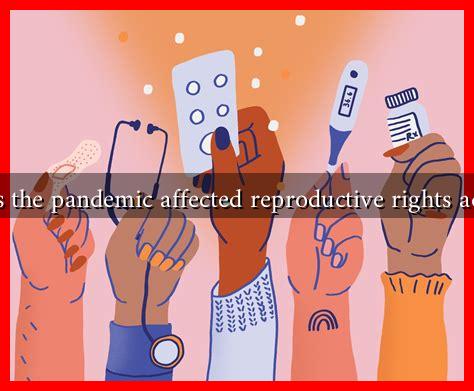-
Table of Contents
How Has the Pandemic Affected Reproductive Rights Advocacy?
The COVID-19 pandemic has had far-reaching implications across various sectors, and reproductive rights advocacy is no exception. As the world grappled with a health crisis, the focus on reproductive health services and rights faced significant challenges and transformations. This article explores how the pandemic has reshaped reproductive rights advocacy, highlighting key issues, responses, and the future landscape of reproductive health.
The Immediate Impact of COVID-19 on Reproductive Health Services
When the pandemic struck, many healthcare systems were overwhelmed, leading to the suspension of non-essential medical services, including reproductive health care. This disruption had several immediate consequences:
- Access to Services: Many clinics providing essential reproductive health services, such as contraception and abortion, were forced to close or limit their operations. This resulted in increased barriers for individuals seeking these services.
- Telehealth Expansion: The pandemic accelerated the adoption of telehealth services, allowing patients to access reproductive health consultations remotely. This shift has been particularly beneficial for those in rural or underserved areas.
- Increased Unintended Pregnancies: With limited access to contraceptive services, many individuals faced the risk of unintended pregnancies, leading to heightened advocacy for reproductive rights.
Shifts in Advocacy Strategies
In response to the challenges posed by the pandemic, reproductive rights advocates adapted their strategies to continue their work effectively. Some notable shifts include:
- Digital Campaigning: Advocacy groups turned to online platforms to raise awareness and mobilize support. Social media campaigns became crucial for disseminating information about reproductive rights and available services.
- Policy Advocacy: Organizations lobbied for policy changes to protect reproductive health services during the pandemic. For instance, many states were urged to classify abortion services as essential, ensuring continued access.
- Community Support Initiatives: Advocacy groups launched initiatives to support individuals facing reproductive health challenges during the pandemic, including providing financial assistance for travel to clinics and access to telehealth services.
Case Studies: Successes and Challenges
Several case studies illustrate the varied responses to the pandemic’s impact on reproductive rights advocacy:
- Planned Parenthood: The organization quickly pivoted to telehealth services, allowing patients to receive consultations and prescriptions remotely. This adaptation helped maintain access to contraceptive services during lockdowns.
- Texas Abortion Law: In Texas, a controversial law banning most abortions was enacted during the pandemic, highlighting the ongoing struggle for reproductive rights. Advocacy groups mobilized to challenge this law, emphasizing the need for access to safe and legal abortion services.
- International Perspectives: In countries like India, the pandemic exacerbated existing inequalities in reproductive health access. Advocacy groups worked tirelessly to ensure that marginalized communities received necessary services, showcasing the global nature of reproductive rights advocacy.
The Future of Reproductive Rights Advocacy Post-Pandemic
As the world begins to emerge from the pandemic, the landscape of reproductive rights advocacy is likely to evolve further. Key considerations for the future include:
- Continued Telehealth Services: The success of telehealth during the pandemic may lead to its permanent integration into reproductive health services, improving access for many.
- Strengthened Coalitions: The pandemic has highlighted the importance of collaboration among advocacy groups, healthcare providers, and policymakers to address reproductive health challenges effectively.
- Focus on Equity: Advocacy efforts will likely place greater emphasis on addressing disparities in reproductive health access, particularly for marginalized communities.
Conclusion
The COVID-19 pandemic has profoundly affected reproductive rights advocacy, presenting both challenges and opportunities for change. While access to reproductive health services faced significant disruptions, the resilience and adaptability of advocacy groups have led to innovative strategies and renewed focus on equity. As we move forward, it is crucial to build on these lessons learned to ensure that reproductive rights remain a priority in public health discussions. The future of reproductive rights advocacy will depend on continued collaboration, policy advocacy, and a commitment to ensuring that all individuals have access to the reproductive health services they need.
For more information on reproductive rights and advocacy efforts, visit Planned Parenthood.




